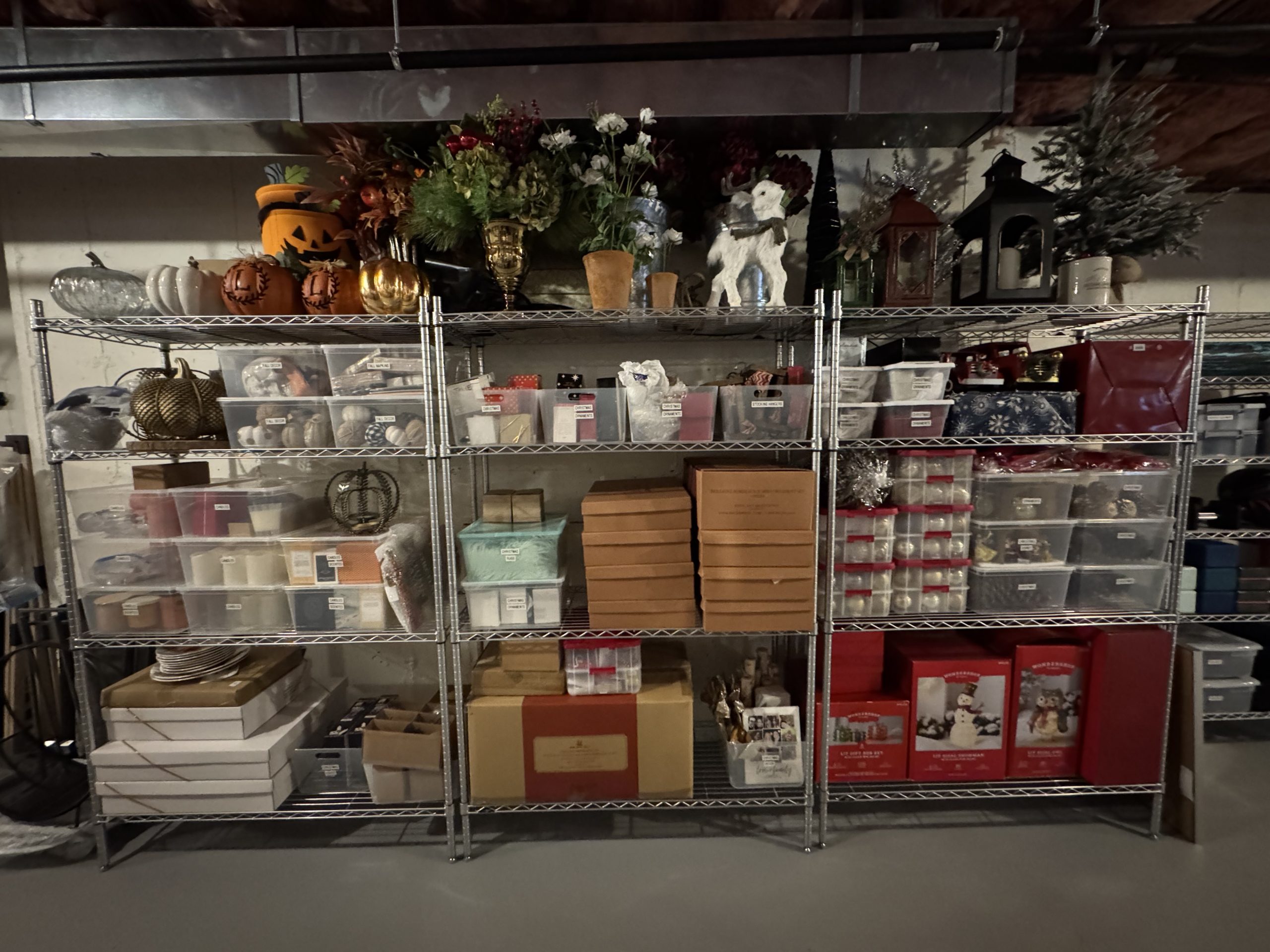Attic organizing comes with unique challenges which prevents you from storing some items due to its limitations. The attic represents the third of the major storage spaces in a typical home of what I call stockroom spaces. I’ve talked about how the garage is the best storage space to start with. It tends to have many quick wins to purge, and it then makes sense to establish exit zones there for the rest of the house. The basement is typically the largest storage space, less accessible than the garage, but more accessible than the attic.
1. Attic Storage Candidates
Because the attic is the least accessible space, it is best suited for items you access annually or less frequently. Some examples for attic organizing candidates are:
- Holiday decorations
- Off-season clothes
- Archives
- Unused decor
- Outgrown toys
- Outgrown clothes
- Moving boxes
- Keepsakes
- Luggage
Here is a note about the last two items of attic organizing candidates:
Luggage
If you travel regularly for business, then it makes sense to keep a carry-on bag closer to your bedroom. But if the family vacations only once or twice a year, then the bulk of your luggage should probably go in the attic. However, luggage requires more access than the other attic candidates, so it should be positioned closest to the attic door.
Keepsakes
These are items you are keeping purely for sentimental reasons. They are the most irreplaceable items, but they do not require regular access. The attic tends to be dry storage, which is good, but it also tends to get very hot, which is not good for photos. Photos are a big part of keepsakes, but they should be stored in a more climate-controlled part of your home.
2. Declutter First
It may seem like the attic’s function is to store stuff when you run out of space elsewhere. But guess what? You can run out of space in the attic too. You will run out of accessibility space before you run out of storage space. That’s not good because an inaccessible attic renders itself useless. So, unless you have established maintainable clear paths, your attic is not organized.
Clear paths should represent your goal for attic organizing and a cleared garage represents your starting point. Why? Because the stuff you’re purging has to go somewhere. A cleared garage is the perfect place to hold discards and donates until the hauling truck arrives. So, what’s your middle point? That’s the processing zone.
3. Processing Zone
You can’t clean a mess in a mess. Inside an attic, you have limited room to move, let alone process. So, don’t. Here is what you should do:
- Establish a processing room on the floor below.
- Protect any exposed bed or floor with plastic sheets or tarps. Attic contents do get dusty.
- Bring down just enough boxes to review to fill up one wall.
- Leave another wall open to collect items to keep.
- After reviewing, get the discards and donates out.
- Move the keeps back up to the attic as you bring down the next review candidates.
4. Dedicated Zones
The first step in prioritizing is decluttering. The second step is to establish dedicated zones. Dedicated zones are what will help you stay organized, because dedicated zones are what establish reasonable limitations.
For example, perhaps you determine that you still have half a wall of Christmas decorations. Those should be stored toward the back of the attic, but not as far back as the moving boxes. If the moving boxes can be flattened and stored under the eaves, they should be. They won’t need to be accessed until you empty your entire attic in your next move. In a small home, you should probably dedicate no space to moving boxes. Get rid of them. It’s more important to have open paths to access what you have than to have packing material. Packing material is replaceable. Your time is not.
5. Floor Structure
Some attics are structurally better for storage than others. Multiple ducts and vents can make it difficult to stack or shelve items. Lacking a floor makes it difficult too. Many attics floors are just open rafters and insulation. A product that I like for this problem is the Lock & Rollin Flooring Solution. It’s easy to install, it can fit through the narrowest entrances, and it can increase your attic storage options 100%!
6. Limited Height
One of the advantages of stockroom space is that you can take advantage of vertical space. The problem with attics, however, is that the height tends to be pretty limited. Still, it is worth setting up three or even two-level shelves to maximize space and accessibility. Modular sets of shelves like the plastic ventilated storage unit from Home Depot are a good inexpensive solution, for small to medium bins.
A well-organized attic space can actually be a fun space to visit, where you can easily find and access what you want, when you want it. This starts by placing a greater value on the paths for accessibility than on the low-value space thieves that are getting too comfortable. Prioritize to organize.
What are your attic pain points or solutions? I would love to hear about them below!
Please Share With Your Community
















